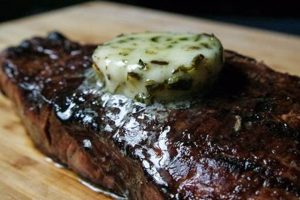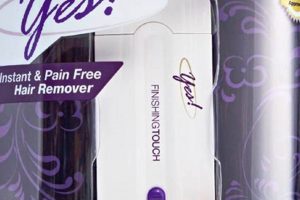The process of applying protective coatings to the wooden surface of a cornhole board ensures durability and aesthetic appeal. This often involves sanding, priming, painting or staining, and sealing the wood to safeguard it against the elements and wear and tear from gameplay. A properly executed application will leave a smooth, consistent surface ideal for bag sliding and game play.
A well-protected cornhole board extends its lifespan and maintains its visual appeal. This surface treatment shields the wood from moisture, ultraviolet radiation, and physical damage, preventing warping, cracking, and fading. Moreover, the resulting consistent surface optimizes gameplay by ensuring predictable bag slide characteristics.
The following sections will delve into the various techniques, materials, and considerations involved in achieving a professional and long-lasting result on cornhole boards. Topics covered will include surface preparation, coating selection, application methods, and post-application care.
Tips for Optimal Cornhole Board Treatment
The following guidelines offer insights into achieving a durable and visually appealing surface on cornhole boards, emphasizing techniques for professional-quality results.
Tip 1: Select Appropriate Wood. Opt for high-quality plywood, such as Baltic birch, known for its smooth surface and resistance to warping. Avoid lower grades containing knots or imperfections that may compromise the final product.
Tip 2: Prepare the Surface Meticulously. Sand the wood progressively with varying grit sandpaper, starting with a coarser grit (e.g., 80-grit) and finishing with a finer grit (e.g., 220-grit). Ensure a smooth, even surface free from imperfections before applying any coatings.
Tip 3: Apply Primer Evenly. A quality primer creates a uniform base for subsequent paint or stain. Apply thin, even coats of primer and allow sufficient drying time between coats as per the manufacturer’s instructions.
Tip 4: Choose Weather-Resistant Coatings. Select paints, stains, and sealants designed for outdoor use. These coatings contain UV inhibitors and water-resistant properties to protect against the elements.
Tip 5: Consider Polyurethane for Durability. Polyurethane provides a durable, protective layer that resists scratches and abrasions. Apply multiple thin coats, allowing each coat to dry completely before applying the next. Sand lightly between coats for optimal adhesion.
Tip 6: Apply Vinyl Decals Before Sealing. If incorporating vinyl decals, apply them after painting and before applying the final protective sealant layer. This protects the decals and prevents them from peeling.
Tip 7: Maintain Consistent Coating Thickness. Uneven coating application can lead to inconsistent bag slide and premature wear. Employ consistent application techniques using spray equipment or high-quality brushes to achieve uniform coverage.
Adhering to these principles yields a cornhole board with enhanced durability, improved gameplay characteristics, and a visually appealing, long-lasting finish. This approach minimizes maintenance requirements and extends the usable life of the equipment.
The next section will cover common problems encountered during the treatment phase and suggest solutions for addressing them effectively, leading to a professional and enduring outcome.
1. Surface Preparation
Surface preparation constitutes a foundational step in the process, influencing the adherence, appearance, and longevity of subsequent coatings. Inadequate attention to this phase can compromise the entire project, resulting in premature failure of the finish and reduced board lifespan.
- Sanding and Smoothing
Sanding removes imperfections, such as splinters, blemishes, and pre-existing coatings, creating a smooth, uniform substrate. Progressive sanding with increasingly finer grits is essential, typically culminating in a 220-grit finish. Failure to properly sand can lead to visible imperfections and inconsistent coating adhesion.
- Cleaning and Degreasing
Removal of dust, debris, and contaminants is crucial before applying any coating. Residue from sanding or handling can interfere with coating adhesion and create surface blemishes. A tack cloth or solvent-based cleaner is typically employed to ensure a pristine surface.
- Filling Imperfections
Knot holes, cracks, or other surface defects necessitate filling with wood filler or epoxy. These fillers must be properly sanded flush with the surrounding surface to ensure a seamless, even finish. Failure to address these imperfections will result in visible blemishes and potential structural weaknesses.
- Priming
Priming enhances coating adhesion, blocks tannins from bleeding through the finish, and creates a uniform base for subsequent coats. The choice of primer should be compatible with the wood species and the intended topcoat. Inconsistent primer application can lead to uneven color and variations in coating durability.
Effective surface preparation provides the canvas upon which the final aesthetic and protective qualities of the finished cornhole board are realized. The time and effort invested in this initial stage directly translate to a superior, longer-lasting outcome, minimizing the risk of future issues and maximizing the board’s performance and visual appeal. Proper execution of these methods provides the foundation for future success.
2. Coating Selection
Coating selection forms a critical juncture within the framework of cornhole board treatment, directly influencing its resilience, aesthetic character, and playability. The selected coating acts as a primary defense against environmental stressors, physical wear, and the cumulative effects of regular gameplay. Inappropriate coating choices can lead to premature degradation, compromised performance, and diminished visual appeal, consequently shortening the board’s lifespan and increasing maintenance requirements. For instance, using an interior-grade varnish on a board exposed to outdoor conditions will result in cracking, peeling, and moisture damage, negating the intended benefits of the finishing process. Conversely, judicious selection provides a durable barrier, safeguarding the underlying wood structure and ensuring predictable bag slide characteristics.
The practical application of informed coating selection is evident in the utilization of marine-grade polyurethanes, often favored for their exceptional water resistance and UV protection. These coatings, when applied in multiple thin layers with proper curing time, create a robust shield against the elements, mitigating the risk of warping, fading, and cracking. Furthermore, the choice between oil-based and water-based coatings presents distinct considerations. Oil-based options typically offer enhanced durability and a richer appearance, while water-based coatings are generally lower in volatile organic compounds (VOCs) and dry more rapidly. Understanding these trade-offs enables informed decision-making based on specific project requirements and environmental considerations.
In summary, coating selection is not merely a superficial decision within cornhole board treatment; it represents a crucial determinant of the board’s long-term performance and visual integrity. The careful consideration of environmental factors, durability requirements, and aesthetic preferences guides the selection process, ensuring that the chosen coating effectively fulfills its protective and decorative functions. Understanding the practical implications of coating choices is therefore essential for achieving a professional, long-lasting result and maximizing the value of the finished cornhole board. The next section will discuss application techniques.
3. Application Technique
Application technique significantly influences the final quality and durability in the treatment of cornhole boards. The manner in which coatings are applied directly affects their adhesion, uniformity, and protective capabilities, dictating the long-term performance and appearance of the finished product.
- Spray Application
Spray application, utilizing compressed air or airless sprayers, provides a consistent and even coating, particularly advantageous for achieving a smooth, professional finish. This method minimizes brush strokes and reduces the likelihood of drips or runs, ensuring uniform protection across the board’s surface. Inconsistent spray patterns or improper nozzle settings, however, can result in uneven coverage and compromised protection. Professional-grade systems allow controlled layering and faster drying times.
- Brush Application
Brush application, when executed with high-quality brushes and proper technique, offers precision and control, particularly beneficial for intricate designs or detail work. This method allows for targeted application in corners and edges, ensuring complete coverage. However, brush strokes can be visible if not properly feathered, and uneven pressure can lead to variations in coating thickness, impacting both aesthetics and durability. The user has more control on this method compared to roller application.
- Roller Application
Roller application offers efficiency in covering large, flat surfaces, making it suitable for applying base coats or sealers to cornhole boards. Selecting the correct roller nap is crucial to avoid stippling or orange peel texture. Improper roller loading or overlapping can result in uneven coating thickness, compromising the finish’s appearance and protective qualities. This is great for large scale production for cornhole boards.
- Curing Environment
The conditions during the drying process play a big role in the final outcome. Ideal temperature, humidity, and airflow must be maintained. Drastic temperature changes will cause cracking, bubbling and poor surface adhesion. Proper ventilation removes harmful fumes and helps with the drying process.
The selection and execution of the optimal method is integral to achieving a durable, visually appealing, and high-performing cornhole board. Mastery of these techniques provides the user with the tools needed to tackle any project effectively.
4. Cure Time
Cure time, in the context of cornhole board treatment, denotes the duration required for applied coatings to fully harden and achieve their intended protective and aesthetic properties. Inadequate cure time directly compromises the structural integrity and surface quality of the finish, regardless of the coating material selected. Premature use or exposure to environmental stressors before complete curing can lead to surface imperfections, diminished durability, and adhesion failures. For example, applying a polyurethane sealant and immediately subjecting the board to direct sunlight or heavy use before the recommended cure period elapses often results in a soft, easily scratched finish. The specific cure time varies significantly depending on the type of coating, ambient temperature, humidity levels, and film thickness. Consequently, adherence to the manufacturer’s recommendations is crucial for realizing the coating’s full potential.
The practical significance of understanding and respecting cure time extends beyond mere aesthetics. A fully cured coating provides a robust barrier against moisture penetration, ultraviolet radiation, and physical abrasion, thereby prolonging the lifespan of the cornhole board and maintaining consistent gameplay characteristics. Conversely, a poorly cured finish is susceptible to cracking, peeling, and discoloration, necessitating premature repairs or re-coating. Consider the scenario of a tournament-grade board coated with multiple layers of epoxy resin. If each layer is not allowed to fully cure before subsequent application, the resulting finish may exhibit trapped solvents, leading to a cloudy or uneven surface and compromising the board’s structural stability over time. Therefore, implementing a controlled curing environment, characterized by stable temperature and humidity, significantly enhances the likelihood of a successful outcome.
In summary, cure time is an indispensable element within the broader scope of cornhole board treatment, functioning as a critical determinant of finish quality and long-term performance. Insufficient curing compromises the protective and aesthetic attributes of the coating, increasing vulnerability to damage and diminishing the board’s overall lifespan. By diligently adhering to manufacturer specifications and implementing appropriate curing practices, individuals can maximize the durability, appearance, and playability of their treated cornhole boards, ensuring sustained enjoyment and minimizing the need for costly repairs. Furthermore, understanding the interplay between coating type, environmental conditions, and cure time allows for informed decision-making and optimized application techniques, contributing to a superior finished product.
5. Layer Adhesion
Layer adhesion constitutes a critical attribute within the overall framework of the finishing process for cornhole boards. It directly influences the durability, longevity, and aesthetic quality of the completed surface. The failure of individual layers to properly bond results in delamination, cracking, and premature degradation of the protective coating, rendering the board susceptible to environmental damage and physical wear. Proper preparation between coats, as example, is crucial to avoid layer adhesion issue.
Effective layer adhesion relies on several interrelated factors, including surface preparation, coating compatibility, and application technique. Inadequate sanding or cleaning between coats can introduce contaminants that inhibit bonding. Similarly, utilizing incompatible coatings or failing to adhere to recommended recoat times compromises the chemical interlock between layers. An illustrative example involves the application of a water-based topcoat over an improperly cured oil-based primer. The disparate chemical properties of these coatings impede proper adhesion, leading to blistering and peeling. Correct layer adhesion ensures the protective coat is solid.
In summary, layer adhesion is not merely a superficial concern; it is a fundamental requirement for achieving a durable and aesthetically pleasing surface on cornhole boards. By prioritizing meticulous surface preparation, selecting compatible coatings, and adhering to proper application techniques, the long-term performance of the finish is maximized. Understanding the practical significance of layer adhesion translates to a more resilient, visually appealing, and ultimately more valuable finished product. The next section will explore Environmental Factors.
6. Environmental Factors
Environmental factors exert a significant influence on the outcome of cornhole board finishing, affecting both the application process and the long-term performance of the completed finish. Ambient temperature, humidity levels, and direct sunlight exposure directly impact the viscosity, drying time, and adhesion characteristics of coatings. Elevated temperatures can accelerate the drying process, potentially leading to the formation of surface imperfections such as bubbling or cracking. Conversely, high humidity retards drying, prolonging cure times and increasing the risk of moisture entrapment. Direct sunlight exposure, particularly during the application and initial curing stages, can cause premature hardening of surface layers, resulting in poor inter-coat adhesion and reduced overall durability. For example, applying a polyurethane sealant on a hot, humid day may lead to a cloudy, non-uniform finish due to moisture interference with the curing process.
The selection of appropriate coatings and application techniques must account for anticipated environmental conditions. Utilizing coatings specifically formulated for outdoor use, containing UV inhibitors and moisture-resistant properties, mitigates the adverse effects of sun and humidity. Implementing controlled drying environments, such as temperature-regulated rooms or shaded areas, provides a more stable setting for the curing process. Furthermore, monitoring dew point, the temperature at which moisture condenses, is crucial to avoid applying coatings when humidity levels are excessively high. Failure to consider these environmental variables can result in compromised adhesion, diminished gloss retention, and accelerated degradation of the cornhole board finish.
In summary, environmental factors represent a critical consideration in achieving a durable and aesthetically pleasing finish on cornhole boards. Understanding the interplay between temperature, humidity, sunlight, and coating properties enables informed decision-making and optimized application practices. By carefully managing environmental conditions and selecting appropriate materials, the long-term performance and visual appeal of the finished cornhole board is enhanced, minimizing maintenance requirements and maximizing its usable lifespan. The next section will cover Storage conditions.
Frequently Asked Questions
The following addresses common inquiries and misconceptions regarding the processes involved in treating cornhole boards, focusing on best practices for achieving a durable and professional result.
Question 1: What type of wood is best suited for cornhole boards requiring a specific treatment?
Baltic birch plywood is widely regarded as an optimal choice due to its smooth, void-free surface and resistance to warping. Lower-grade plywood often contains knots and imperfections that can compromise the integrity and aesthetics of the finished board.
Question 2: How important is sanding in the preparation of a cornhole board?
Sanding is essential for creating a smooth, uniform surface that promotes proper coating adhesion. Progressive sanding with varying grits of sandpaper, typically concluding with a 220-grit finish, removes imperfections and ensures a professional-quality result.
Question 3: What is the purpose of applying a primer before coating a cornhole board?
A primer creates a uniform base for subsequent coats of paint or sealant, enhancing adhesion and preventing tannins from bleeding through the finish. The selection of an appropriate primer compatible with both the wood species and the intended topcoat is crucial.
Question 4: Are specific types of coatings recommended for cornhole boards used outdoors?
Coatings designed for outdoor use, such as marine-grade polyurethanes, are recommended due to their water resistance and UV protection properties. These coatings protect the board from the elements, preventing warping, cracking, and fading.
Question 5: How many coats of polyurethane should be applied to a cornhole board for optimal protection?
Multiple thin coats of polyurethane, typically three to four, provide superior protection compared to a single thick coat. Sanding lightly between coats promotes optimal adhesion and a smooth, even finish.
Question 6: What environmental conditions should be considered during the application process?
Ambient temperature, humidity levels, and direct sunlight exposure can significantly impact the outcome. Applying coatings in a controlled environment with stable temperature and humidity minimizes the risk of imperfections and ensures proper curing.
By understanding these factors, one can approach the cornhole board treating process with the knowledge necessary to achieve a durable, aesthetically pleasing, and high-performing finished product.
The next section will cover safety protocols.
Cornhole Board Finishing
This exploration has underscored the multifaceted nature of cornhole board finishing, highlighting its importance in safeguarding the structural integrity, optimizing gameplay, and enhancing the visual appeal of these recreational fixtures. Proper execution requires meticulous attention to surface preparation, informed coating selection, skillful application techniques, and adherence to recommended cure times. Moreover, recognizing and mitigating the influence of environmental factors is paramount in achieving a durable and long-lasting result.
Given the significance of these considerations, it is incumbent upon builders and enthusiasts to approach the process with diligence and a commitment to best practices. A well-executed application not only extends the lifespan of the equipment but also contributes to a more enjoyable and consistent gaming experience. Future advancements in coating technologies and application methods promise further enhancements in performance and durability, warranting continued attention and adaptation within the cornhole community.



![Overlord: Is the Light Novel Finished? [Status Update] Best Final Touch: Elevate Your Projects with Professional Finishing Overlord: Is the Light Novel Finished? [Status Update] | Best Final Touch: Elevate Your Projects with Professional Finishing](https://bestfinaltouch.com/wp-content/uploads/2025/11/th-510-300x200.jpg)

![Why Mirror Finish Cast Iron [Pros & Cons] Today! Best Final Touch: Elevate Your Projects with Professional Finishing Why Mirror Finish Cast Iron [Pros & Cons] Today! | Best Final Touch: Elevate Your Projects with Professional Finishing](https://bestfinaltouch.com/wp-content/uploads/2025/11/th-504-300x200.jpg)

